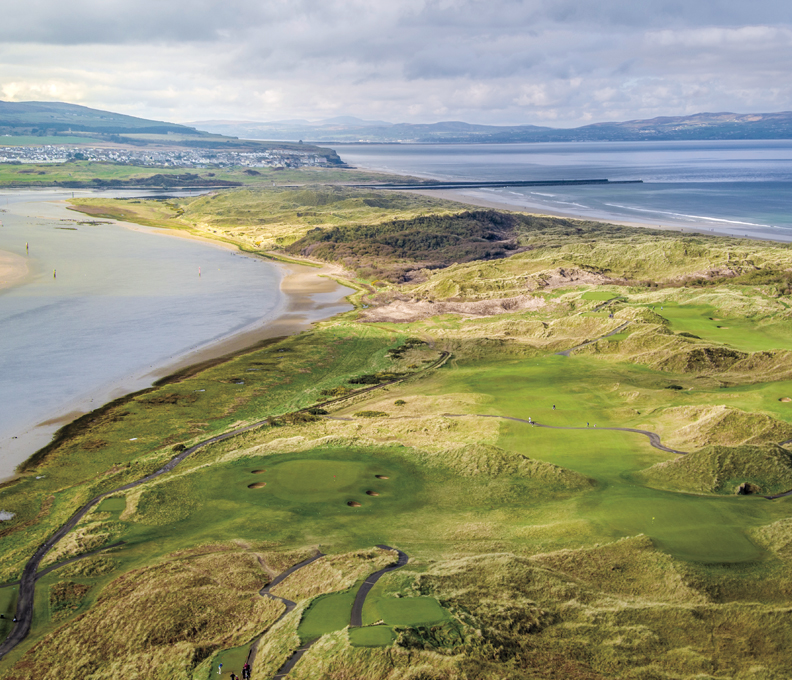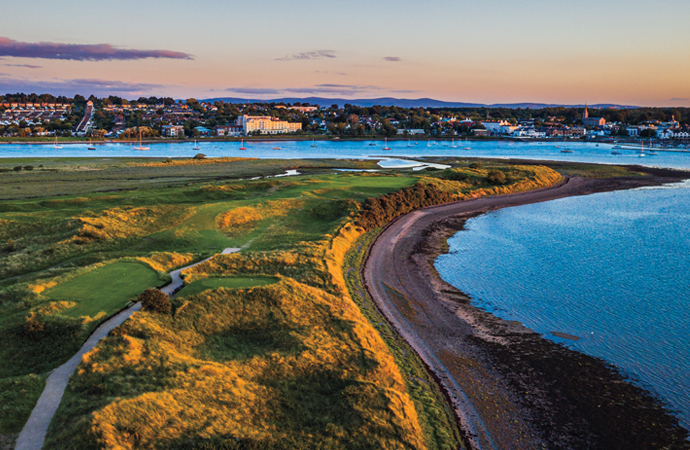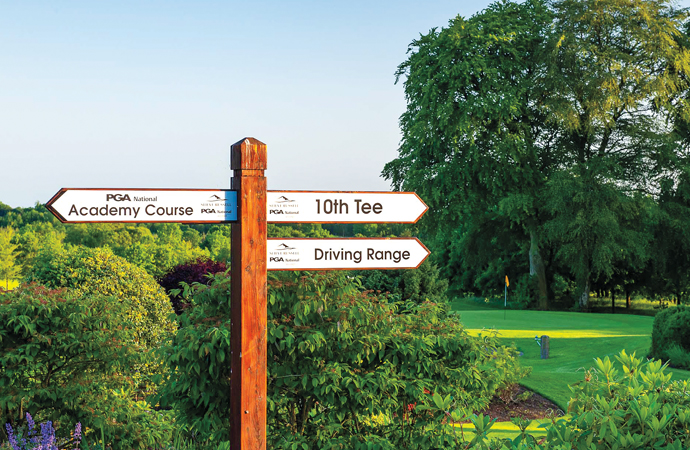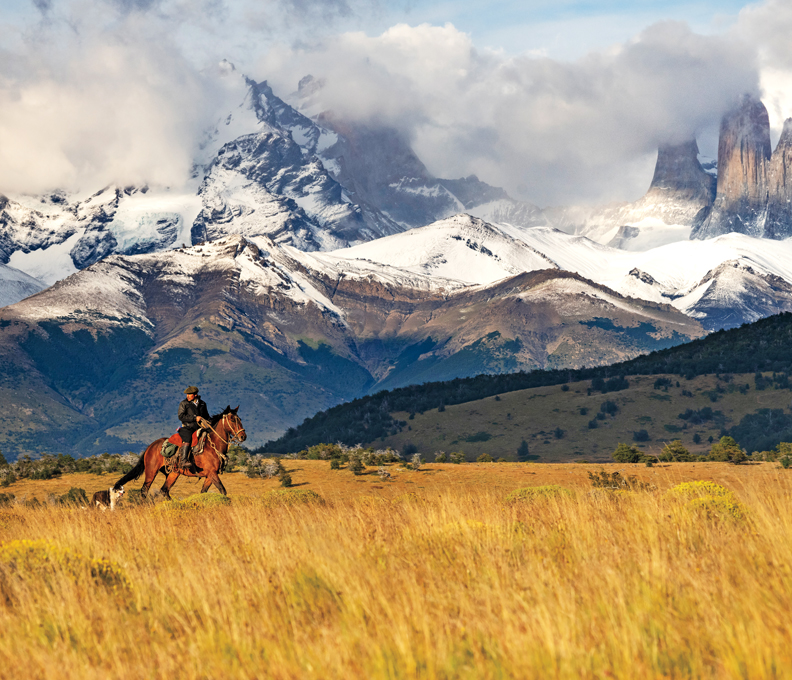A Connoisseur’s Guide to Irish Golf Courses
Classic links, quirky links and everything in between
by Jeff Wallach
May 17, 2023

Portstewart Golf Club, Northern Ireland / Photo: Courtesy of Rob Durston
You can divide most Irish golf courses into three main categories: classic links, quirky links and everything else. While most American golfers visit Ireland to lose balls in the grassy dunes of windswept seaside links courses, it’s worth scheduling a few parkland venues into the mix for some relief and variety. Visitors from the States usually arrive at Dublin Airport in the morning. Rather than collapsing into bed, consider walking 18 holes at one of two terrific local venues to keep you up through the day so you can go to sleep that first night on local time.
The Royal Dublin Golf Club

14th hole at The Royal Dublin Golf Club / Photo: Courtesy of The Royal Dublin Golf Club
As classic as they come, The Royal Dublin Golf Club—the second oldest course in Ireland, dating from 1885—routes across flat, sandy Bull Island in Dublin Bay. The current iteration was designed by Harry Colt with renovations by Martin Hawtree, who raised and contoured the greens and surrounded them with tricky run-outs. The topography mostly surrounds the fairways, and includes mounds, swales, a stone wall, deep re-vetted bunkers and other features the dangers of which are turbocharged in even a mild wind. Fifteen minutes from the city, this accessible private club has it all—including a drivable par four at number 17. Possibly you’ll finish your round here as well as Christy O’Connor did, when he won a championship by closing with two eagles and a birdie on the final three holes. But probably not!
The Island Golf Club

The Island Golf Club, Dublin / Photo: Courtesy of The Island Golf Club
The Island Golf Club, 30 minutes from Dublin and established in 1890, is bordered by the sea on three sides. The course has hosted several prestigious events among the highest dunes along the east coast. Golfers once arrived here by rowboat across the bay from the city, near where the 14th hole presents one of the narrowest fairways in golf (hole names such as “Quarry” and “Andes” give an idea of the awaiting challenges). The gorgeous, rolling corduroy terrain is pocked by natural pot bunkers and buffered by gumdrop mounds and mini mountains. Natural and curvaceous, the landscape can be treacherous, with steep bunkers, blind shots and elevated tees and greens. The front nine carves through high dunes, while the back opens to pastoral vistas. Four new holes have brought The Island to the top of most lists of local Dublin courses.
Slieve Russell Hotel Golf & Country Club

Slieve Russell Hotel Golf & Country Club, Ballyconnell, Ireland / Photo: Courtesy of Kevin Markham
To the northwest and equidistant from Dublin and Belfast, Slieve Russell Hotel Golf & Country Club is home to one of eight PGA National-designated resorts in the world. Architect Patrick Merrigan wrapped the golf holes around the lakes and drumlins of a 300-acre estate. This parkland venue features a meticulously manicured and refined landscape that provides respite from the rugged nature of links courses. Mature trees protect the course from major wind gusts and lend a cozy, insular feel. The four-star hotel offers a welcoming ambience following a lovely game.
St. Patrick’s Links

15th hole at St. Patrick’s Links, Rosapenna Hotel & Golf Resort, Letterkenny, Ireland / Photo: Courtesy of Rosapenna Hotel & Golf Resort
Continuing in a northern direction almost to the Atlantic Ocean, you will encounter the storied Rosapenna Hotel & Golf Resort, home to three layouts unfurling in often misty salt air. The current clamor here is over Tom Doak’s St. Patrick’s Links, opened in 2021 and already ranked 55th in the world. While the course is unparalleled for dramatic beauty, it’s also nearly unplayable for average golfers—although if you are a single-digit grinder it may prove among your favorites anywhere. As if this collection of blind shots around impossible corners to tiny hidden greens wasn’t already overcooked, the greens here border on satire. For example, there’s a 450-yard par four in a two-club wind where the pin is placed on a shelf that would barely hold your collection of James Joyce novels, while the greens in general feature more breaks than a Gaelic football match. St. Patrick’s does boast what may be the best logo in golf: Ask yourself why there’s a snake on it.
Instead, book your tee time on Rosapenna’s Sandy Hills course, which may still prove to be one of the toughest links you’ll encounter—a fellow golf writer described this gentler course as “like a zombie movie, and you don’t have enough bullets.” Featuring nine holes laid out by Old Tom Morris and tweaked by Harry Vardon and James Braid, and another nine by Pat Ruddy, the course drills through the dunes with no apologies. Fairways appear dental-floss-thin, although many landing areas open up, but often not in a way that you can see from the tees. Many of the tees are elevated and require drives into tureens of fescue nestled between dunes. Hidden bunkers and a healthy supply of marram grass add to the mayhem, which some players absolutely love. The routing climbs and plunges more than a volatile NASDAQ market while proffering views of Sheephaven and Mulroy bays.
North West Golf Club
Heading slightly east you’ll be happy to encounter the North West Golf Club, set beside Lough Swilly beneath Mouldy Hill. It’s one of nine founding members of the Golfing Union of Ireland, dating back to 1891. The surprising quality of this little-known layout is exactly why people come to Ireland to play links golf. Unpretentious and full of locals, these subtle holes wind merrily if trickily through a narrow strip of perfect rolling fescue-draped terrain between water and a country road. The unique and surprising routing includes holes doubling back and crossing each other. It took our group four holes to discover that hitting the greens directly was a bad idea, and that shots needed to land short and use the subtle terrain to move the ball toward the holes. Each shot was a quirky delight and unlike every other in an infinite permutation that is golf architecture at its highest expression. One of my companions called the 133-yard par three eighth hole “the shortest par four in Ireland” due to the unlikelihood of making par.
Portstewart Golf Club
Make the transition from moderate to muscular links by heading past Derry to the remote Portstewart Golf Club’s Strand Course in Northern Ireland. The opening tee shot over a massive dune sets the pace for a day of epic links golf. With more doglegs than a greyhound race, the holes here reward shotmaking and moving the ball, rather than length. Early views of the flatter back nine suggest a less interesting return, but once you’re down in those holes they reveal subtle and delightful intricacies and great variety. Willie Park, Jr., and Des Griffin laid the always natural, never gratuitous holes among fairways undulating beneath silvery dunes covered in marram grass. Holes play across the site of a 9,000-year-old settlement, a WWII shooting range, strawberry patches, lark nests and Celtic burial sites, offering views of the River Bann and North Atlantic.
Galgorm
Home to the 2020 Irish Open, Galgorm resort should be your home at the tail end of your golf trip. This gentle design with grabby rough and slyly narrow fairways may counter your idea of easy birdies, but the eminently walkable layout is a pastoral delight and you’re likely to score well with moderate effort. The Jacobean architecture of 17th-century Galgorm Castle is visible from the 10th hole, and the entire property is bordered by the rivers Maine and Braid, which come into play on numerous holes. Five lakes and an oxbow provide a little extra challenge and appear adjacent to the 14th hole.




